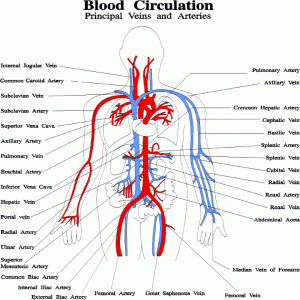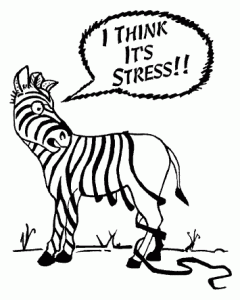Discover why everyone should make massage therapy a part of their health and wellness routine.
A soothing massage can help you unwind, but that’s not all. Explore the possible health benefits and risks of massage therapy, plus what to expect.
By Mayo Clinic staff
Massage is no longer available only through luxury spas and upscale health clubs. Today, massage therapy is offered in businesses, clinics, hospitals and even airports. If you’ve never tried massage, learn about the possible health benefits of massage and what to expect during a massage therapy session.
What is massage?
Massage is a general term for pressing, rubbing and manipulating your skin, muscles, tendons and ligaments. Massage therapists typically use their hands and fingers for massage but may also use their forearms, elbows and even feet. Massage may range from light stroking to deep pressure techniques.
There are many different types of massage, including these common types:
- Swedish massage. This is a gentle form of massage that uses long strokes, kneading, deep circular movements, vibration and tapping to help relax and energize you.
- Deep-tissue massage. This massage technique uses slower, more forceful strokes to target the deeper layers of muscle and connective tissue, commonly to help with muscle damage from injuries.
- Sports massage. This is similar to Swedish massage but is geared toward people involved in sport activities to help prevent or treat injuries.
- Trigger point massage. This massage focuses on trigger points, or sensitive areas of tight muscle fibers that can form in your muscles after injuries or overuse.
Benefits of massage
Massage is generally considered part of complementary and alternative medicine. It’s increasingly being offered along with standard treatment for a wide range of medical conditions and situations.
Studies have found massage helpful for:
- Stress relief
- Managing anxiety and depression
- Pain
- Stiffness
- Blood pressure control
- Infant growth
- Sports-related injuries
- Boosting immunity
- Cancer treatment
Beyond the benefits for specific conditions or diseases, some people enjoy massage because it often involves caring, comfort, a sense of empowerment and creating deep connections with their massage therapist.
Despite its benefits, massage isn’t meant as a replacement for regular medical care. Let your doctor know you’re trying massage and be sure to follow any standard treatment plans you have.
Use massage as another health care tool
Brush aside any thoughts that massage is only a feel-good way to indulge or pamper yourself. To the contrary, massage can be a powerful tool to help you take charge of your health and well-being, whether you have a specific health condition or are just looking for another stress reliever. You can even learn how to do self-massage or to engage in massage with a partner.
Risks of massage
Massage is generally safe as long as it’s done by a trained massage therapist. But massage isn’t appropriate for everyone. Discuss massage with your doctor first in cases of:
- Unexplained pain or other symptoms
- Burns or open wounds
- Cancer
- Blood clots
- Fractures
- Rheumatoid arthritis
- Severe osteoporosis
- Pregnancy
Some forms of massage can leave you feeling a bit sore the next day. But massage shouldn’t be painful or uncomfortable. If any part of your massage doesn’t feel right or is painful, speak up right away. Most serious problems come from too much pressure during massage.
In rare circumstances, massage can cause:
- Internal bleeding
- Nerve damage
- Temporary paralysis
- Allergic reactions to massage oils or lotions
What you can expect during a massage
You don’t need any special preparation for massage. Before a massage therapy session starts, your massage therapist should ask you about any symptoms, your medical history and what you’re hoping to get out of massage. Your massage therapist should explain the kind of massage and techniques he or she will use.
In a typical massage therapy session, you undress. Undress only to the point that you’re comfortable. You generally lie on a table and cover yourself with a sheet. You can also have a massage while sitting in a chair, fully clothed. Your massage therapist should perform an evaluation through touch to locate painful or tense areas and to determine how much pressure to apply.
If you want, your massage therapist may use oil or lotion to reduce friction on your skin. Tell your massage therapist if you might be allergic to any ingredients.
A massage session may last from 15 to 90 minutes, depending on the type of massage and how much time you have. No matter what kind of massage you choose, you should feel calm and relaxed during and after your massage. Pain that’s more significant than momentary discomfort could indicate that something is wrong. If a massage therapist is pushing too hard, ask for lighter pressure. Occasionally you may have a sensitive spot in a muscle that feels like a knot. It’s likely to be uncomfortable while your massage therapist works it out. But if it becomes painful, speak up.
Finding a massage therapist
Massage can be performed by several types of health care professionals, such as a physical therapist, occupational therapist or massage therapist. Ask your doctor or someone else you trust for a recommendation. Most states regulate massage therapists through licensing, registration or certification requirements.
Don’t be afraid to ask a potential massage therapist such questions as:
- Are you licensed, certified or registered?
- What is your training and experience?
- What’s the cost?
http://www.mayoclinic.com/health/massage/SA00082
 The circulatory system comprises the heart, along with all the arteries, veins, capillaries, and blood. These major organs and tissues have a host of responsibilities for keeping the body alive. One of those responsibilities is to move oxgenated blood throughout the body and return deoxygenated blood to the heart and lungs. Oxgenated blood allows all the organs, tissues, and the body as a whole to function normally.
The circulatory system comprises the heart, along with all the arteries, veins, capillaries, and blood. These major organs and tissues have a host of responsibilities for keeping the body alive. One of those responsibilities is to move oxgenated blood throughout the body and return deoxygenated blood to the heart and lungs. Oxgenated blood allows all the organs, tissues, and the body as a whole to function normally.![Reblog this post [with Zemanta]](http://img.zemanta.com/reblog_e.png?x-id=2b4f8d83-b9a6-4d5b-9540-ed35bc852d31)
 Stress is a fact of life and a necessity in many cases but left unaddressed, stress can wreak havoc on your body systems and interfere with the intelligent workings of your body. Simply put, general health will be impaired and ill effects unavoidable.
Stress is a fact of life and a necessity in many cases but left unaddressed, stress can wreak havoc on your body systems and interfere with the intelligent workings of your body. Simply put, general health will be impaired and ill effects unavoidable.